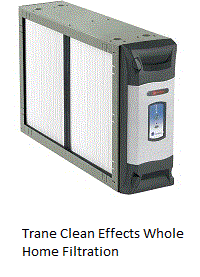Why Phoenix Heat Pump Installation is the Right Arizona Heating Option
Whether Heating or Cooling, Phoenix Heat Pump Installation Makes Good Arizona Sense
Against the moderate heating requirements but intense cooling demands of Arizona, Phoenix heat pump installation provides a logical, economical and comfortable HVAC solution. Although slightly more pricey than standard central Air Conditioning, heat pumps provide an effective energy-efficient alternative to central gas, electric or fuel oil furnace systems.
Whereas standard A/C units shift heat from within your home by extracting the hot interior air and replacing it with cooler exterior air, heat pumps function on the order of an Air Conditioning system and a refrigerator unit. This means they move warm air in both directions. For example: A refrigerator compressor uses electricity to shift heat from insider your cooler to outside your cooler. In the process of removing the heat from within the refrigerator, the compressor dumps warm air into the kitchen.
When functioning as an Air Conditioning system, your Phoenix heat pump extracts warm air from within your home, dumps it into the exterior Arizona environment and then returns cooler exterior air into your home. As a heating system, the heat pump extracts warm air from exterior Arizona environment, dumps it into your Phoenix home and then moves the cooler inside air into the outside environment.
Correctly installed heat pumps move heat rather than generate heat. If a skilled and reputable Phoenix HVAC dealer handles your Phoenix heat pump installation, the system will provide as much as four times the amount of energy it consumes. For more details on quality Phoenix HP installation, click here.
Air-Source Heat Pumps – The Most Commonly Installed Phoenix A/C Equipment
Modern heat pump technology provides a multitude of HVAC options, including absorption heat pumps, geothermal (ground-source or water-source) heat pumps and the common air-source heat pump.
Geothermal Heat Pumps – As a highly efficient but costly HVAC solution, geothermal HP equipment utilizes natural ground and/or water temperatures. The units tend to have a lower operating cost that other HVAC heating solutions. However, they have specific regional requirements for subsoil conditions and physical routing space. As a heating solution in regions that typically experience extreme temperatures, geothermal heat pumps provide a high level of customer satisfaction. As a Phoenix heat pump installation option, they may be more costly than what is reasonably acceptable.
Absorption Heat Pumps – Typically called gas-fired heat pumps, absorption HP units are relatively new to the residential HVAC marketplace. According to the U.S. Department of Energy, residential absorption heat pumps are fuel driven systems that use ammonia-water absorption cycles. The ammonia is absorbed into water rather than pressure pumped. The heat source is used to boil the ammonia out of the water. Absorption heat pumps are currently only available on homes to the scale of 4,000 plus sq. feet.
Air-Source Heat Pumps – Typical Phoenix heat pump installation projects use air-source HP solutions. Designed to transfer heat from house air to outside air or from outside air to house air, air source heat pumps are energy efficient, reliable and comfortable. During the winter, an American Cooling and Heating installed AZ heat pump can trim your electric usage by as much as 40%. High-efficiency air source heat pumps provide improved humidity control over standard central air conditions. Against the mean average temperatures in Arizona, a Phoenix heat pump installation not only makes good AZ sense, it makes the best AZ sense.
Some Arizona homes are not equipped with a duct system. AC&H can also install a ductless, mini-split heat pump system. Modern heat pump technology also includes a system called “reverse cycle chillers.” Designed for use as a radiant floor HVAC solution, “reverse cycle chillers” generate hot and cold water rather than air.
For more details on your Arizona HVAC options, click here.
Http://AmericanCoolingandHeating.com provides licensed, bonded and insured valley-wide Arizona air conditioning and heat pump installation and services.



